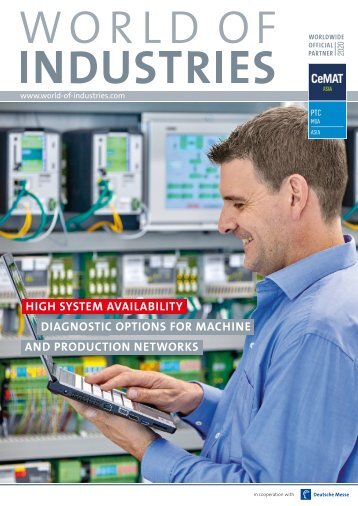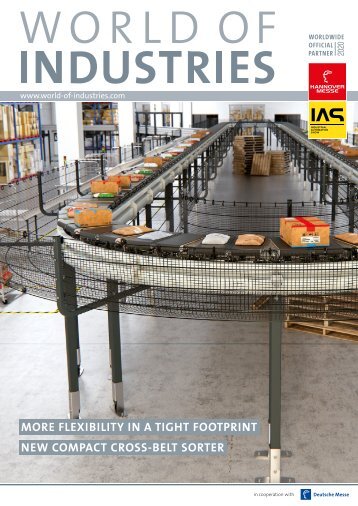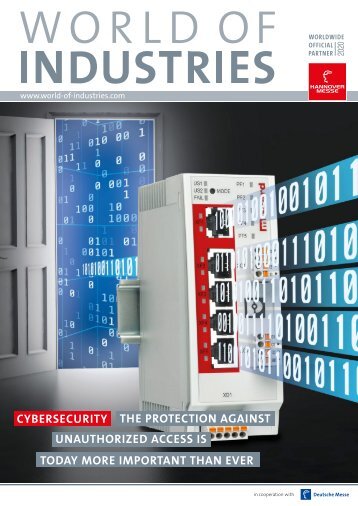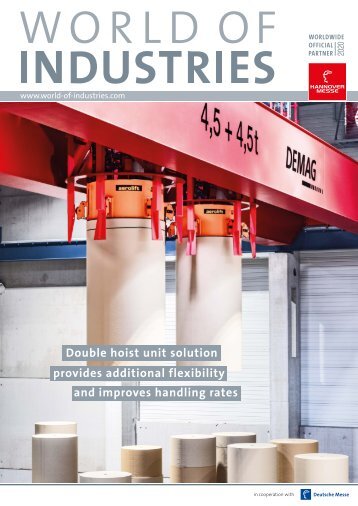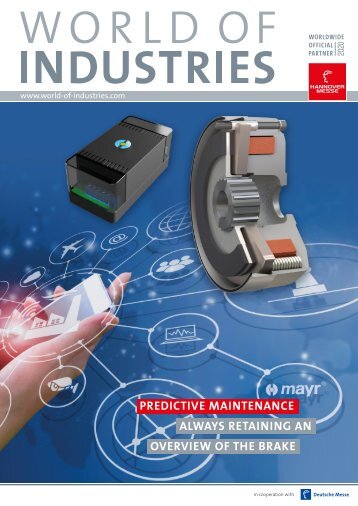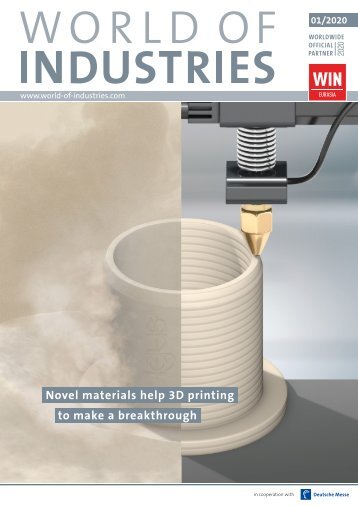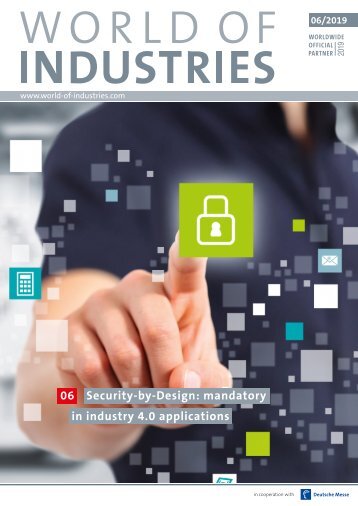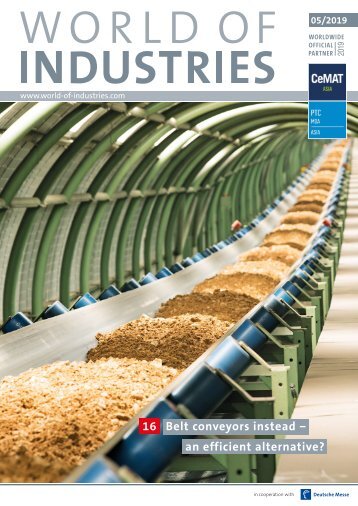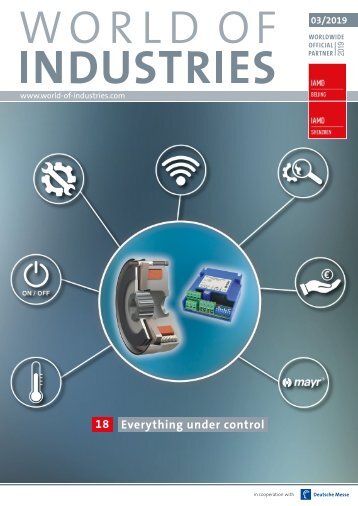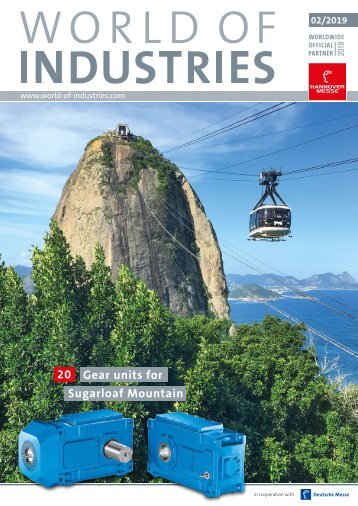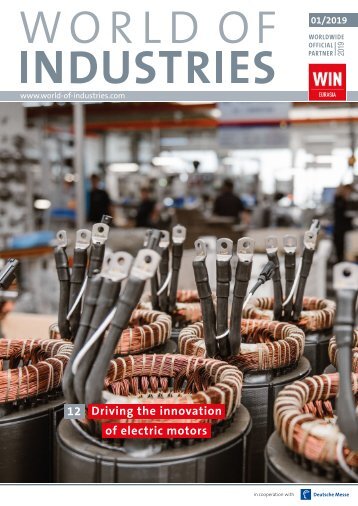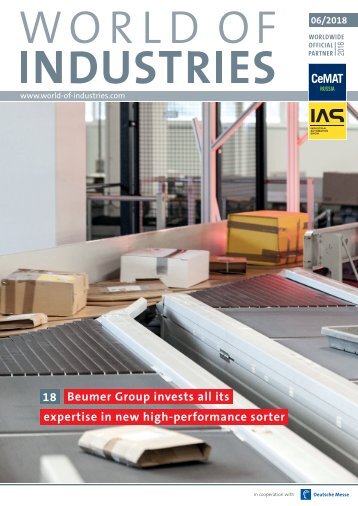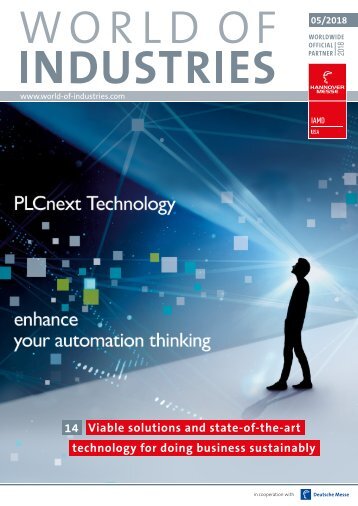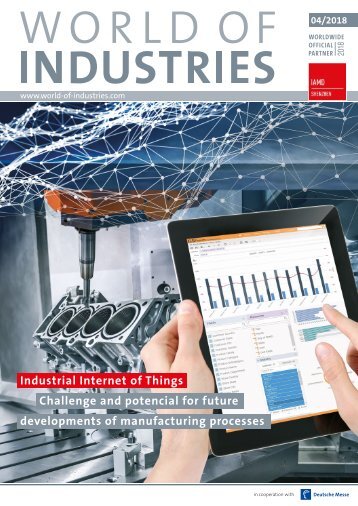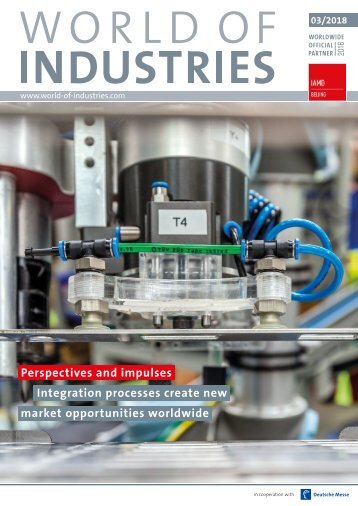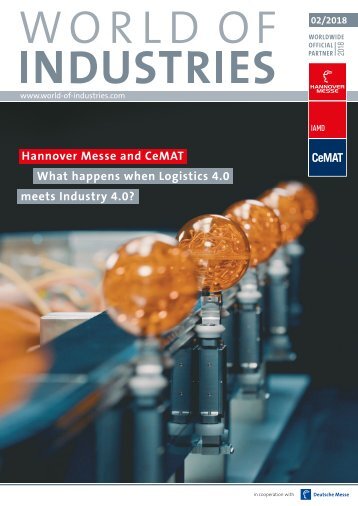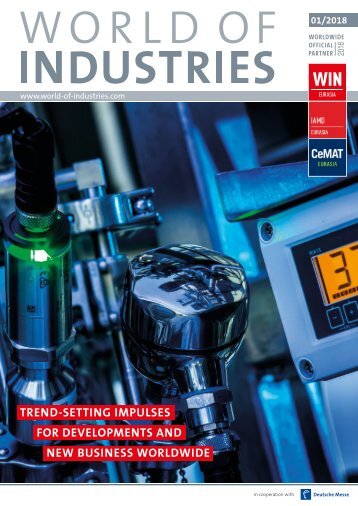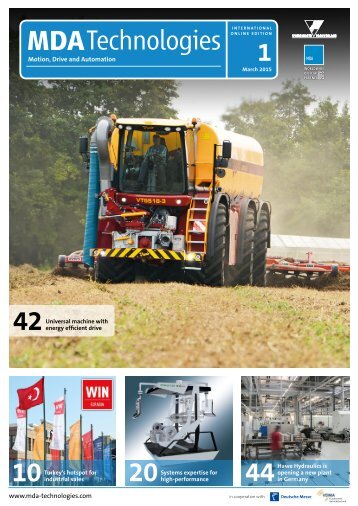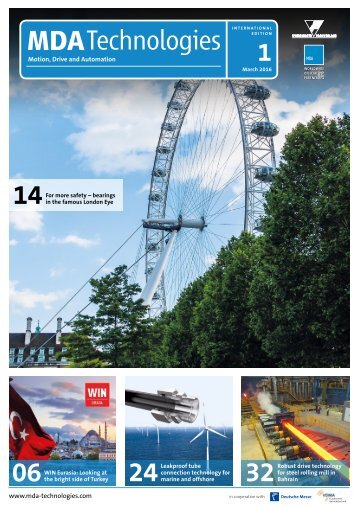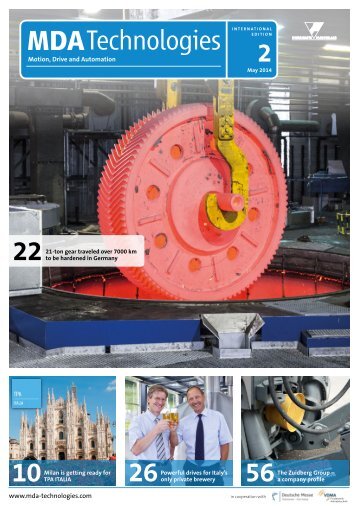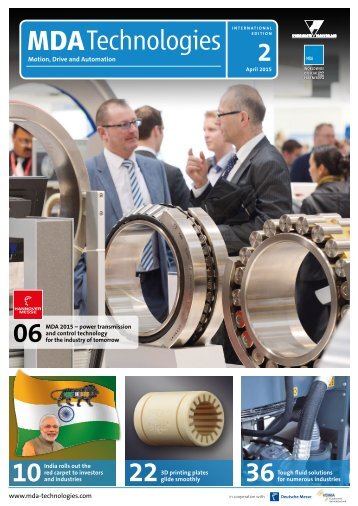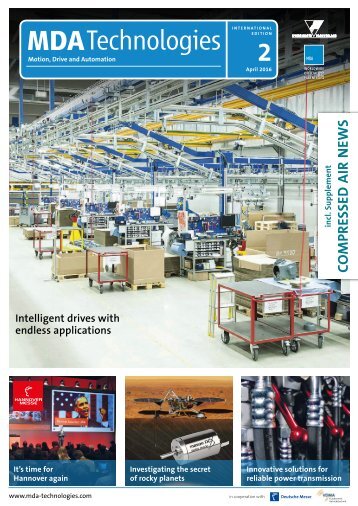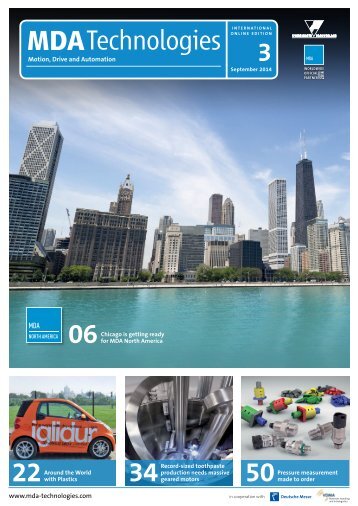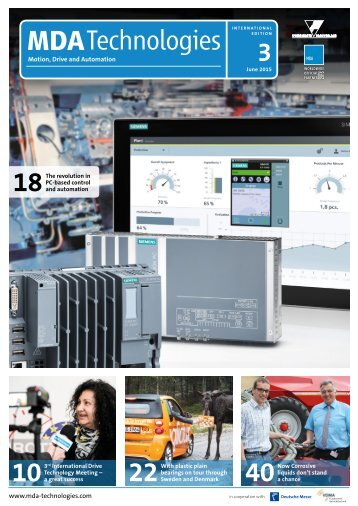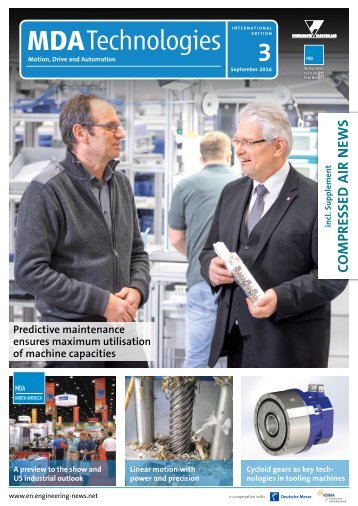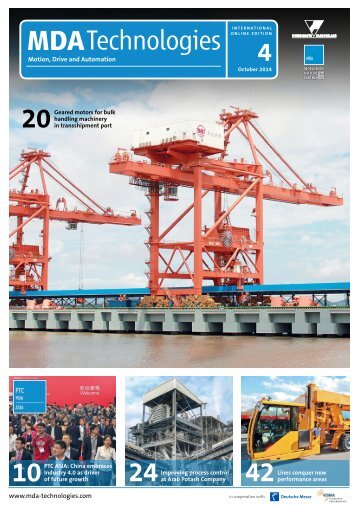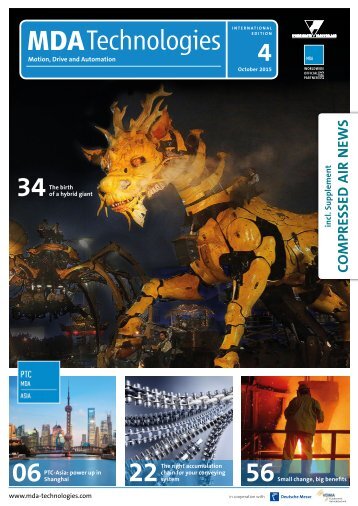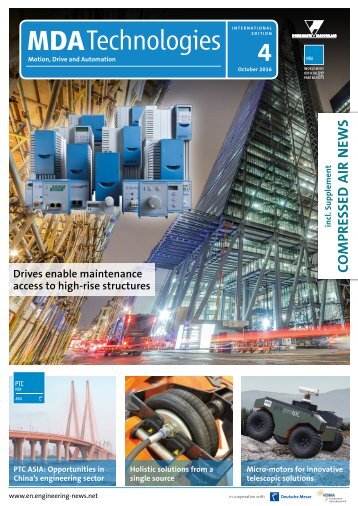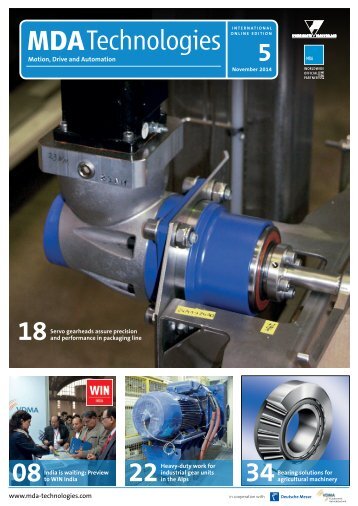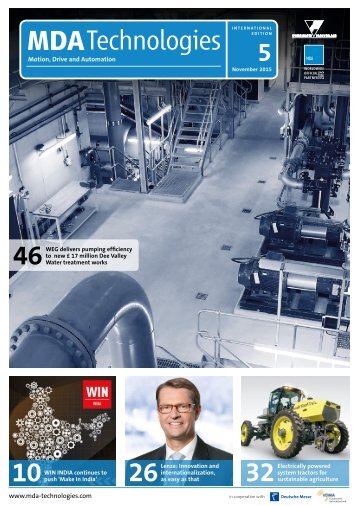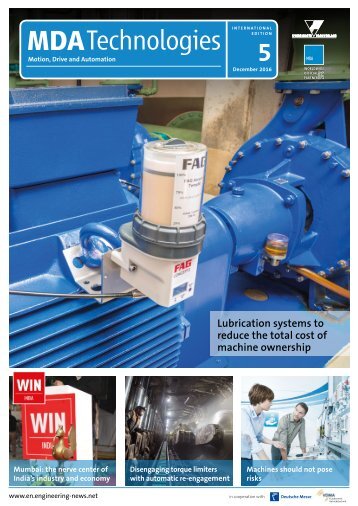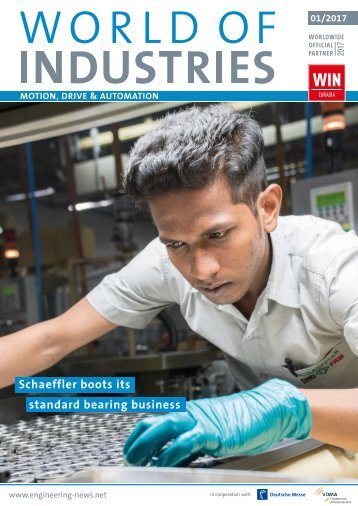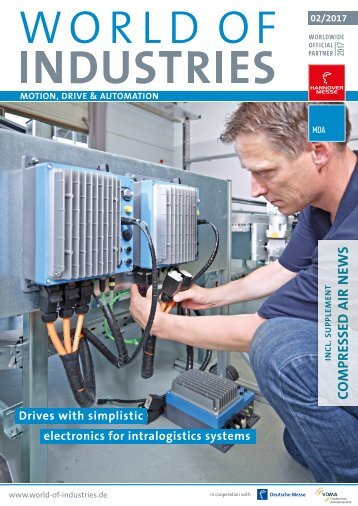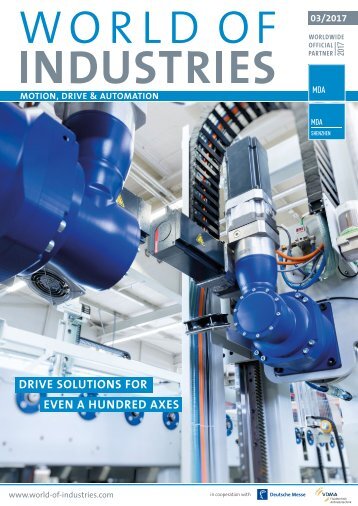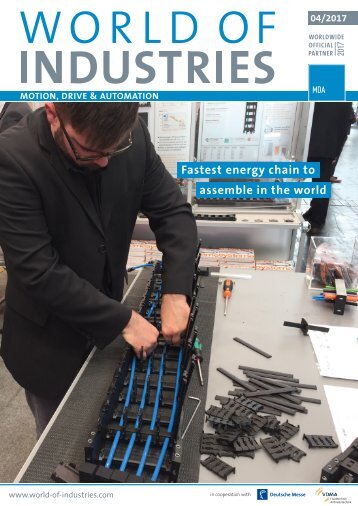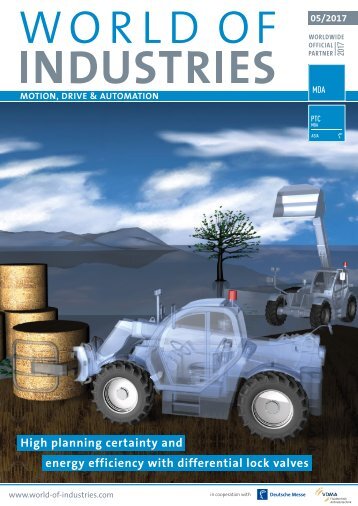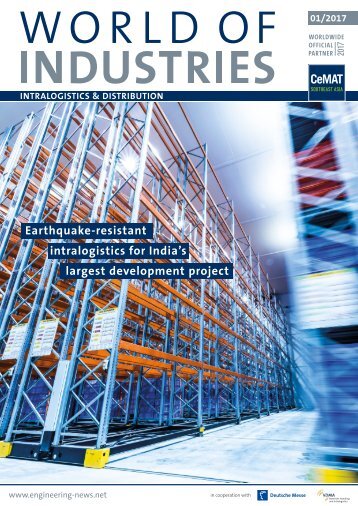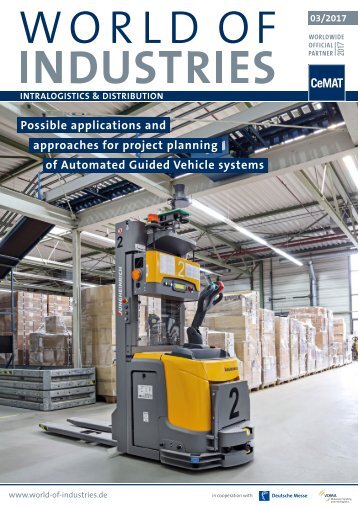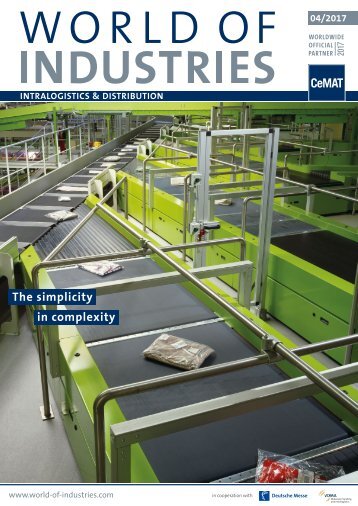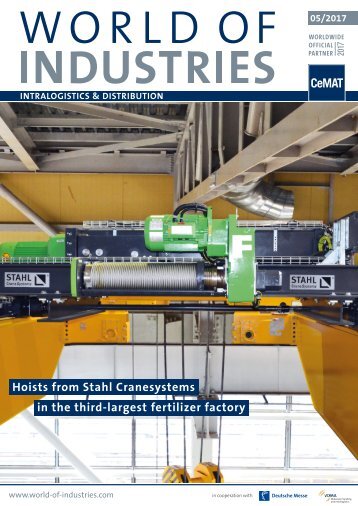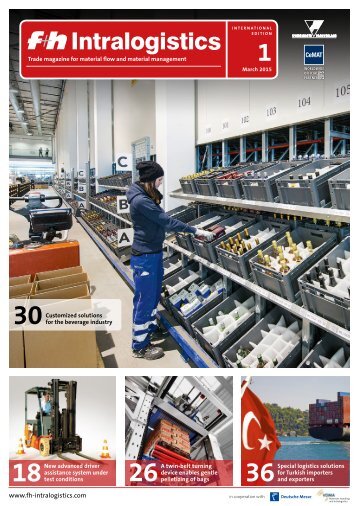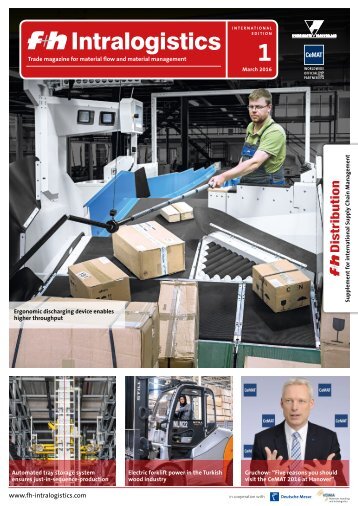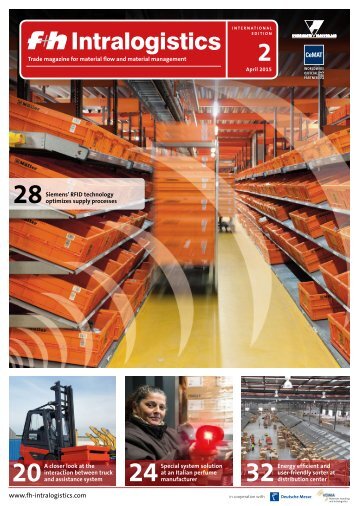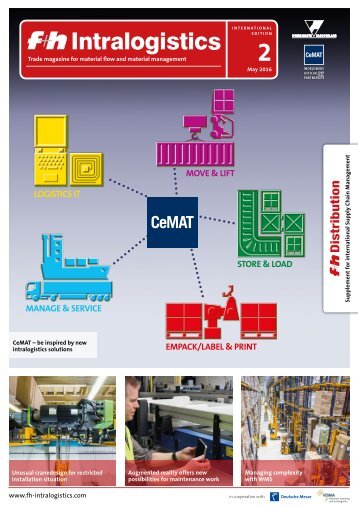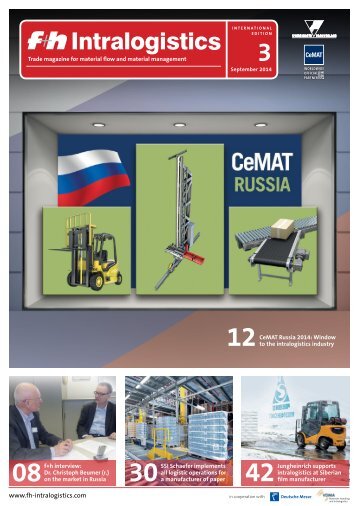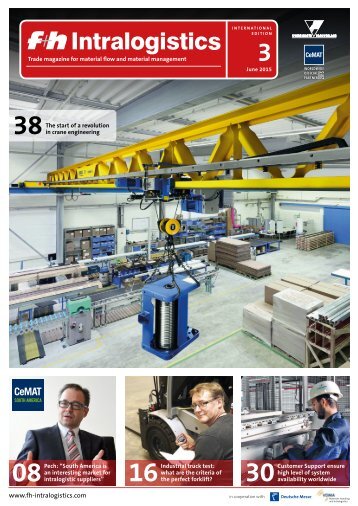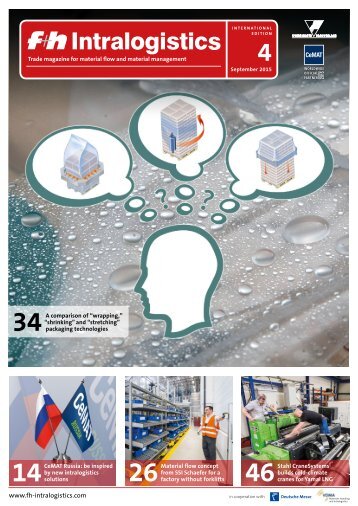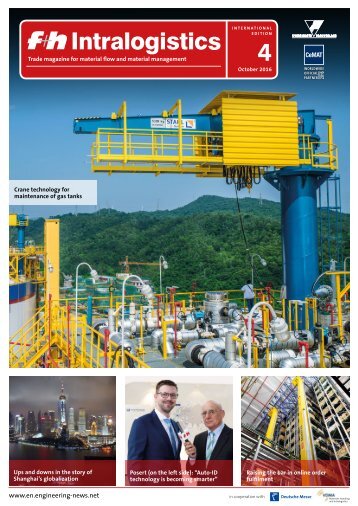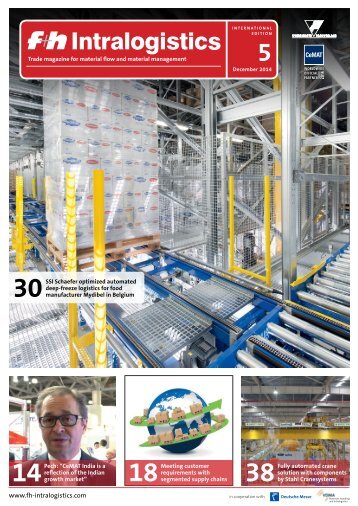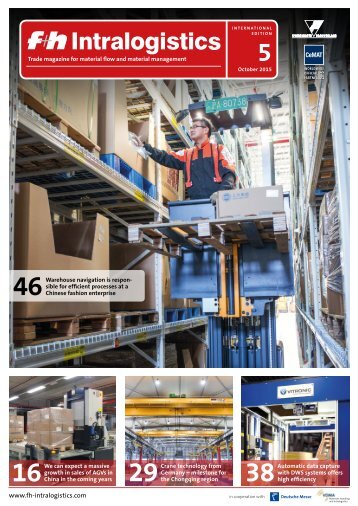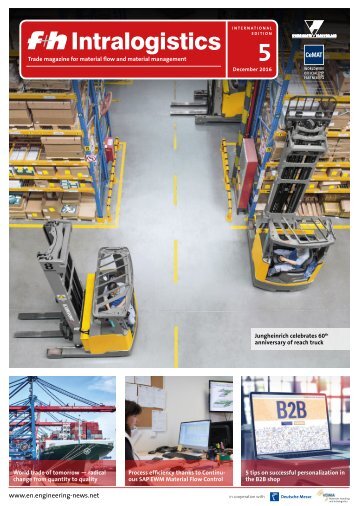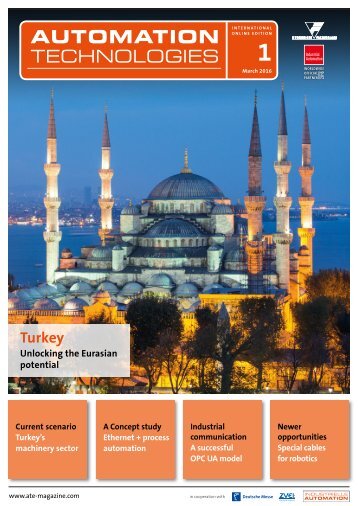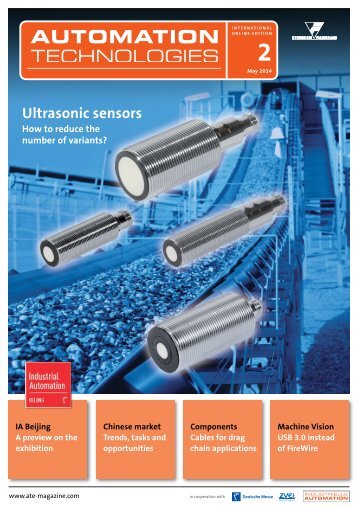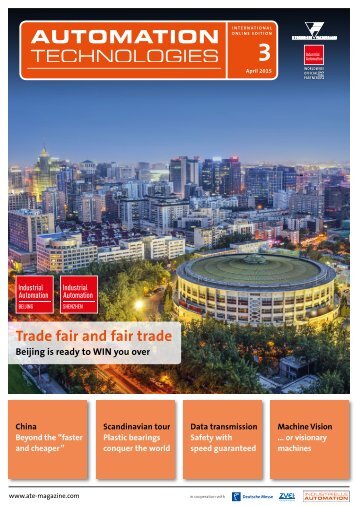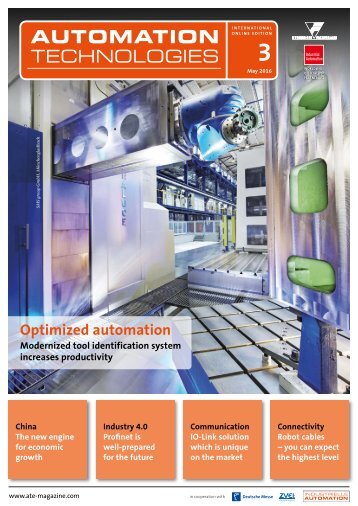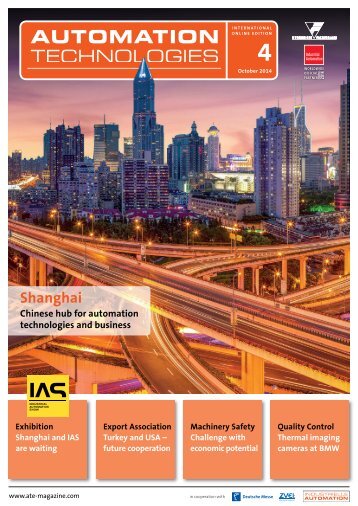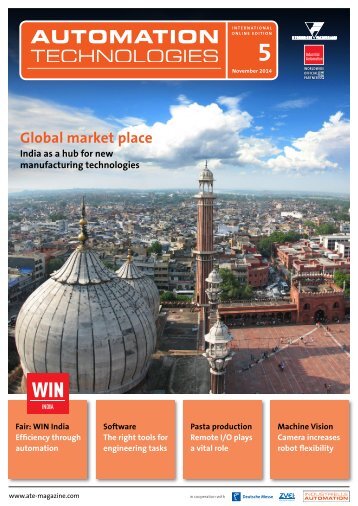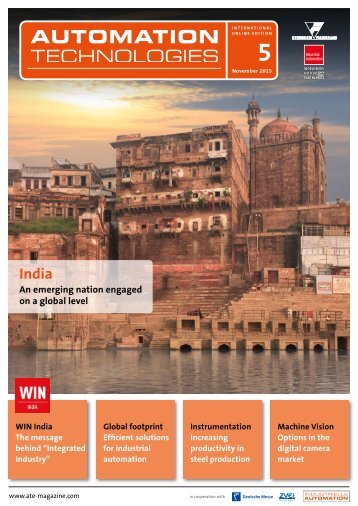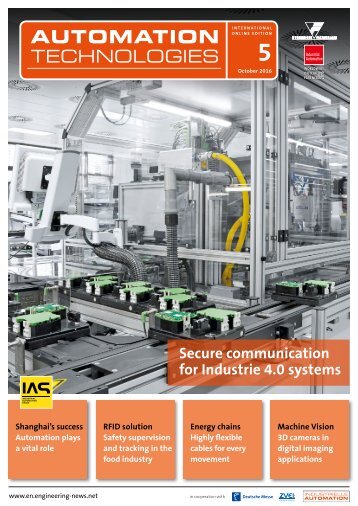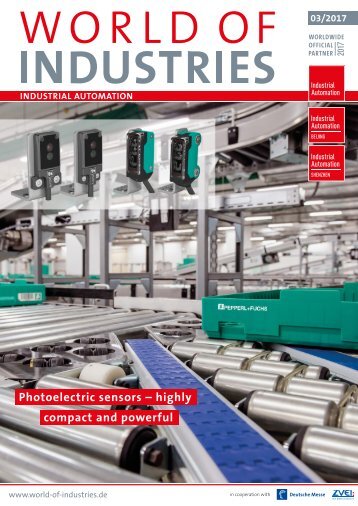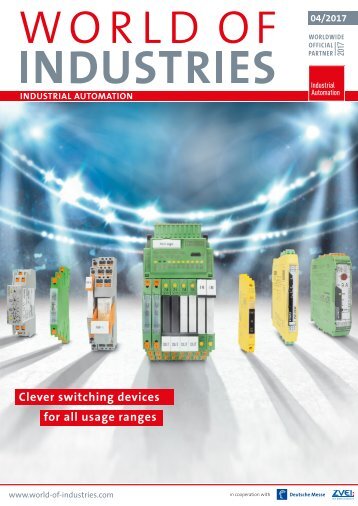Automation Technologies 2/2014
- Text
- Automation
- Technologies
Industrial communication
Industrial communication RFID Systems enable a production with many variants Back to current issue Markus Weinländer Customized products are more and more in demand. However, the step from mass-production to individualized series products particularly affects the production engineering. With RFID, the challenges of producing small lots with many variants can be solved effectively. Author: Markus Weinländer, Head of product management Simatic Ident at Siemens AG, Division Industry Automation, in Nuremberg, Germany In the production, there are a multitude of measures that enable a cost-effective manufacturing of individualized series products. By now it has been accepted that the decentralization of the planning, control and monitoring represents an important strategy for this. Decentralization means that decisions are made at an as low as possible level in the automation hierarchy, i.e., “on site”. Ideally, the work piece should bring along all information about the steps to be performed on it, without necessitating central units for the individual control. This concept ultimately leads to autonomous manufacturing cells, which can perform a specific production step as independently as possible from other units, and also optimize themselves through their ability to learn. However, when utilizing such flexible manufacturing stations, a clear identification of the respective work AUTOMATION TECHNOLOGIES 2/2014
Industrial communication piece is indispensable: After all, the machine has to execute an individualized program for each work piece. The theoretical possibility of predicting every product movement by computer, which work piece is located in which station at the moment, is hardly feasible in practice. Too large are the possible deviations; too complex is the work with regard to the data. Flexible Production – controlled by Radio In practice, various identification systems are being employed, with RFID systems in the high frequency band (HF) having proved particularly effective due to their low costs and very high reliability. Radio technology is unsusceptible to any type of dirt contamination. This makes it interesting for applications where harsh environmental conditions are unavoidable. A second advantage of RFID is the possibility of repeatedly writing to the data medium. In combination with the high storage capacity of RFID transponders (up to 32 kB with the Siemens system Simatic RF300), decentralized automation architectures can be implemented, which greatly reduce the work for the centralized data storage. The concept: RFID transponders with large memory are affixed to each work piece (or work piece carrier) and store all necessary production data, e.g., bill of materials, production instructions, inspection guidelines. At the beginning of a production line, this data is retrieved from the production control system and programmed into the transponder. At the individual production stations, PLCs read this data directly from the RFID readers and utilize it to control the production section. Ideally, no queries to the background systems are required. After carrying out the production step, the PLC can store status and quality data on the RFID transponder, before it is transported together with the work piece to the next station. Various RFID solutions available Siemens offers two RFID product families in the HF area. Simatic RF300 uses a specifically developed radio protocol that communicates eight times faster than standard systems, and the data media can store up to 32 kB of data. The advantage: Even extensive data records can be read very fast – often without having to stop the transponder (and thus the work next page 01 High-performance systems are able to capture transport boxes
- Page 1 and 2:
international ONLINE Edition 2 May
- Page 3 and 4:
Editorial Opportunities of a world
- Page 5 and 6:
A short video review at WIN Automat
- Page 7 and 8:
Measurement specialist Acam expands
- Page 9 and 10:
North American Machine Vision Marke
- Page 11 and 12:
ead article AUTOMATION TECHNOLOGIES
- Page 13 and 14:
More and more companies in China va
- Page 15 and 16:
AUTOMATION TECHNOLOGIES read articl
- Page 17 and 18:
AUTOMATION TECHNOLOGIES read articl
- Page 19 and 20:
AUTOMATION TECHNOLOGIES read interv
- Page 21 and 22:
ead article AUTOMATION TECHNOLOGIES
- Page 23 and 24:
ead article AUTOMATION TECHNOLOGIES
- Page 25 and 26:
News and markets billion RMB* *RMB
- Page 27 and 28:
AUTOMATION TECHNOLOGIES read articl
- Page 30 and 31:
AUTOMATION TECHNOLOGIES Mid range u
- Page 32 and 33:
AUTOMATION TECHNOLOGIES On the requ
- Page 34 and 35:
AUTOMATION TECHNOLOGIES WEG motors
- Page 36 and 37: AUTOMATION TECHNOLOGIES Energy savi
- Page 38 and 39: AUTOMATION TECHNOLOGIES RFID System
- Page 40: Industrial Communication What are t
- Page 43 and 44: ead article AUTOMATION TECHNOLOGIES
- Page 45 and 46: AUTOMATION TECHNOLOGIES read articl
- Page 47 and 48: ead article AUTOMATION TECHNOLOGIES
- Page 49 and 50: ead article AUTOMATION TECHNOLOGIES
- Page 51 and 52: ead article AUTOMATION TECHNOLOGIES
- Page 53 and 54: ead article AUTOMATION TECHNOLOGIES
- Page 55 and 56: ead article AUTOMATION TECHNOLOGIES
- Page 57 and 58: Z-Laser available in Benelux from S
- Page 59 and 60: Editorial Opportunities of a world
- Page 61 and 62: News and Markets The figures are im
- Page 63 and 64: News and Markets As tariffs have be
- Page 65 and 66: Pushing progress in automation tech
- Page 67 and 68: News and Markets dimensional way. T
- Page 69 and 70: News and Markets Compared to 2010,
- Page 71 and 72: News and Markets In total, five emp
- Page 73 and 74: News and Markets region, Industrial
- Page 75 and 76: Sensors and Measurement zones. The
- Page 77 and 78: Get engineering news. Inspiration i
- Page 79 and 80: Sensors and Measurement next page t
- Page 81 and 82: Reach international markets. New bu
- Page 83 and 84: chilled water which, after suppleme
- Page 85: Control and drive technology for ea
- Page 89 and 90: previous page Successfully implemen
- Page 91 and 92: Industrial communication Advantages
- Page 93 and 94: Components and Software About Compa
- Page 95 and 96: Components and Software chain cable
- Page 97 and 98: Components and software next page E
- Page 99 and 100: Technology knowledge for engineers
- Page 101 and 102: Machine Vision next page FireWire d
- Page 103 and 104: Machine Vision 03 Amortisation of t
- Page 105 and 106: Machine vision advanced image captu
- Page 107: Machine Vision Novel System Archite
Inappropriate
Loading...
Mail this publication
Loading...
Embed
Loading...

